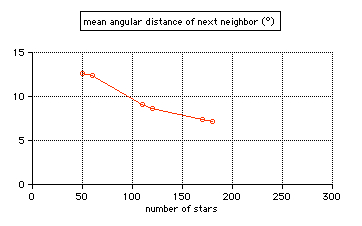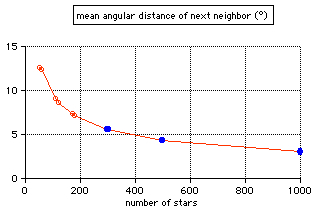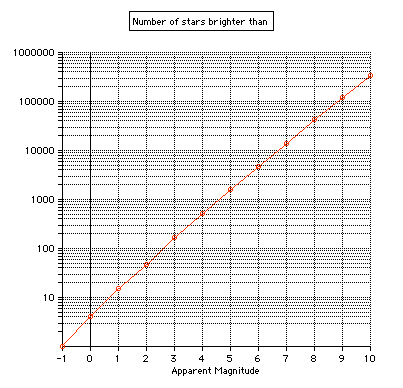|
|
GeoAstro Applets |
Astronomy |
Chaos Game |
Java |
Miscel- laneous |
|
The applet is computing the
angular separation (degrees) of the nearest
neighbor for 200 of the brightest stars
(visual magnitudes < 3.0):
The stars are displayed by two frames:
 Splitting the celestial sphere (size 3602/π square degrees = 41253 square degrees) into equal-sized cells (d*d square degrees each)    distance for number of stars n>240
computed by the formula
Between n=60 and n=240 the mean
difference between the observed angular distance (applet) of
the nearest neighbor and the value from
the formula is 1.7 %.
http://en.wikipedia.org/wiki/Apparent_magnitude 
Table according to Argelander The 16 brightest stars visible in the northern hemisphere:
|
Last modified: 2023, Oct 05